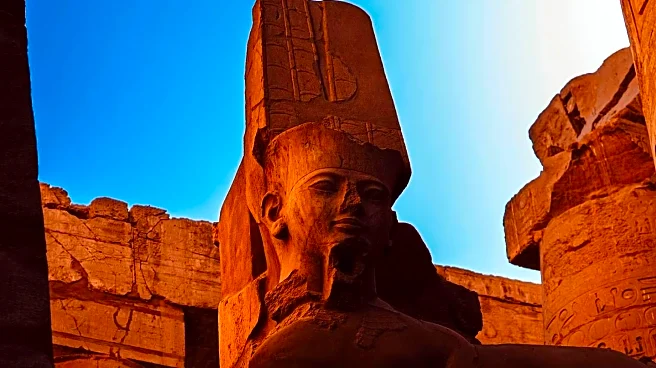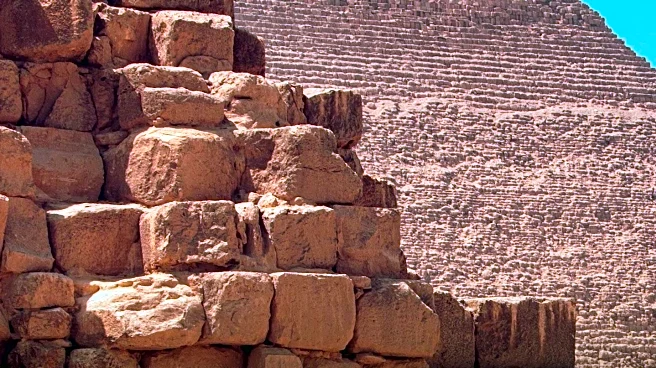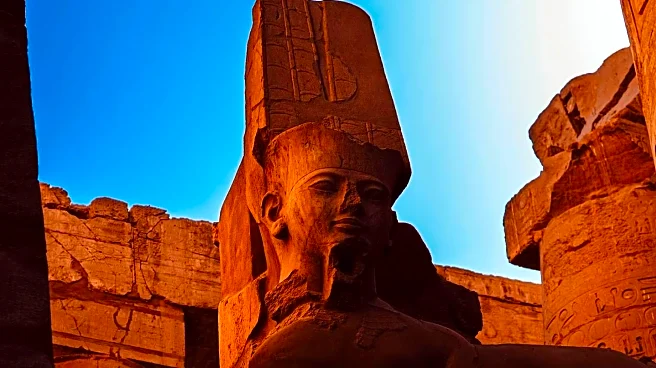What's Happening?
Egypt has reopened the tomb of Pharaoh Amenhotep III in Luxor after more than two decades of renovation. The tomb, located in the Valley of the Kings, was discovered in 1799 and had been looted of its contents, including the sarcophagus. The restoration project, led by Japanese experts, involved renovating paintings of the pharaoh and his wife on the tomb walls. The tomb features a long passageway leading to the main burial chamber and two additional chambers for his wives. The reopening is part of Egypt's efforts to revive its tourism sector, which has suffered since the political turmoil following the 2011 uprising.
Why It's Important?
The reopening of Amenhotep III's tomb is a significant step in Egypt's strategy to attract foreign visitors and revitalize its tourism industry, a crucial source of foreign currency. The tourism sector has been struggling due to political instability and violence over the past decade. By showcasing its rich pharaonic heritage, Egypt aims to boost visitor numbers and economic recovery. The upcoming inauguration of the Grand Egyptian Museum further underscores these efforts, promising to enhance Egypt's cultural tourism appeal.
What's Next?
The official opening of the Grand Egyptian Museum near the Giza Pyramids is scheduled for November 1, which is expected to further bolster Egypt's tourism sector. The museum will feature extensive collections of ancient Egyptian artifacts, potentially drawing significant international attention and visitors. Continued restoration and promotion of historical sites are likely to be part of Egypt's long-term strategy to sustain and grow its tourism industry.












